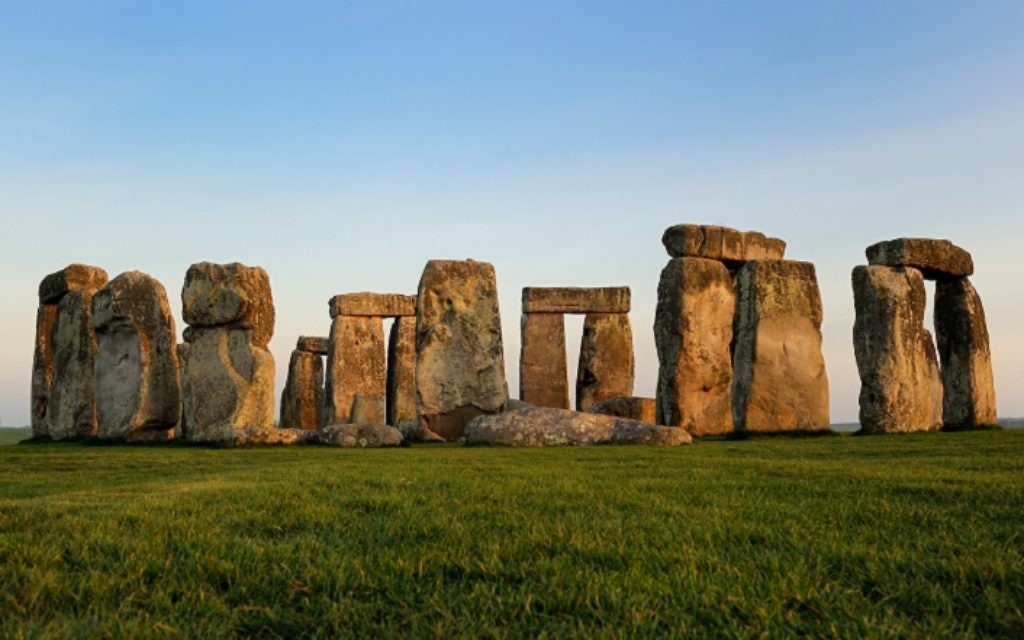Rock and awe at Stonehenge!
Francine Wolfisz delves into the ancient enigma of Stonehenge, explores Britain’s only natural thermal spring and enjoys a sumptuous country break in the Cotswolds
From a site of worship and coronations, to a gigantic sundial, a place of healing – and even a landing pad for aliens – the reason why Stonehenge was built has kept us stumped for thousands of years.
But standing on Salisbury Plain on a brisk spring day, looking at this ancient wonder, there was another enigma that is just as incomprehensible – how on earth did our ancestors even make the mighty trilithons in the first place?
Many of the stones are 13 feet high, 7 feet wide and weigh around 25 tons, not to mention that some were dragged from Preseli Hills – more than 150 miles away!
Get The Jewish News Daily Edition by email and never miss our top stories Free Sign Up
My children stared in awe as the afternoon sun shone through the remains of this famed-lintelled stone circle – the only surviving one of its kind in the world – and cast its long shadows across the open grassland.
This year marks 100 years since a local barrister named Cecil Chubb and his wife, Mary, gifted Stonehenge to the nation and restoration work began on conserving the best-known prehistoric monument in Europe.
Over that time, archaeologists have unearthed more than 250 objects left behind, from intricate pendants and beads to pottery and flint tools.
There was something awe-making about staring into the face of a 5,500-year-old man, reconstructed from skull remains, as well as standing inside the stones and watching the seasons and centuries speed past, thanks to the audio-visual, 360 degree view on display inside the visitor centre.
Back outside, the kids loved looking around the reconstructed Neolithic houses and trying their hand at grinding grain into flour, using only stones – it was certainly hard work and even after 20 minutes of pounding the grain, there was barely enough flour to even get started!
Our visit to Stonehenge, where thousands of people will gather later this month for the annual Summer Solstice, coincided with a visit to the stunning Wiltshire Cotswolds.
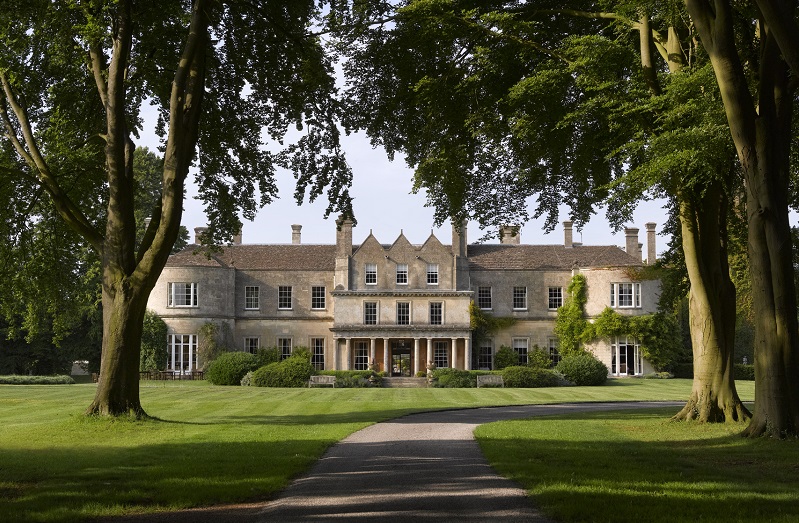
With their pretty honey-coloured stone villages, narrow, meandering lanes and miles of unspoilt countryside, there’s no surprise that the Cotswolds have been designated as an Area of Outstanding Natural Beauty.
As we drove along, we discovered the picturesque villages of Sherston, Slaughterford and Castle Combe, the latter having been often voted the prettiest village in England and featured in such films as Dr Dolittle (1967), War Horse (2011) and Stardust (2007).
Just a short drive away from Castle Combe, we journeyed on to Lucknam Park Hotel & Spa. Set in 500 acres of sprawling parkland and with a magnificent avenue of 400 lime and beech trees, it’s hard not to be impressed by this grand country house, which offers 42 individually-styled rooms and suites.
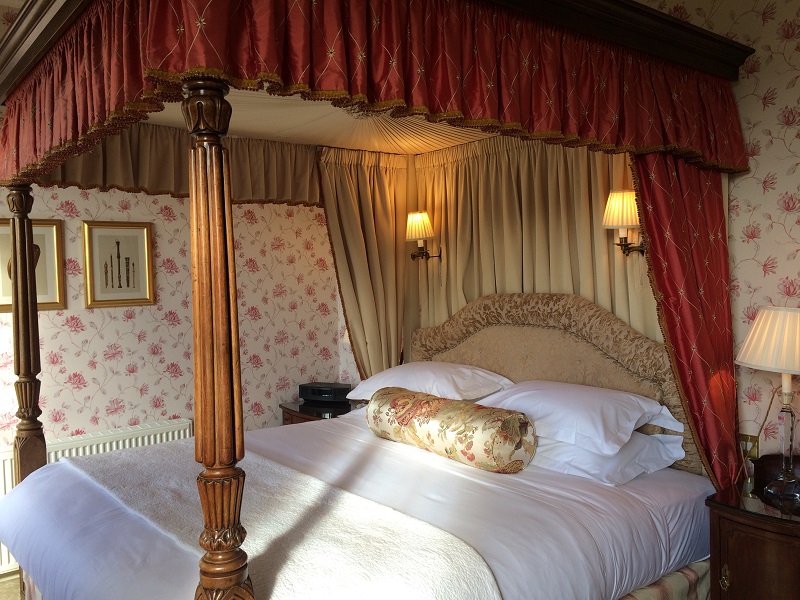
But for all its grandeur – the hotel goes above and beyond in making everyone welcome – even your family pooch.
Lucknam Park’s younger guests can also expect to receive the royal treatment. Not only did the hotel surprise us by managing to source fluffy bathrobes and slippers small enough to perfectly fit our three- and seven-year-olds, but there is also a fabulous 20-metre indoor swimming pool for them to enjoy, as well as an on-site equestrian centre providing pony rides and lessons.
For little chefs, the hotel even boasts a cookery school, while The Brasserie offers a good selection of contemporary, child-friendly choices on its menu.
Meanwhile, the hotel’s more formal, Michelin-starred Restaurant Hywel Jones, welcomes little diners aged over 5, until 8pm.
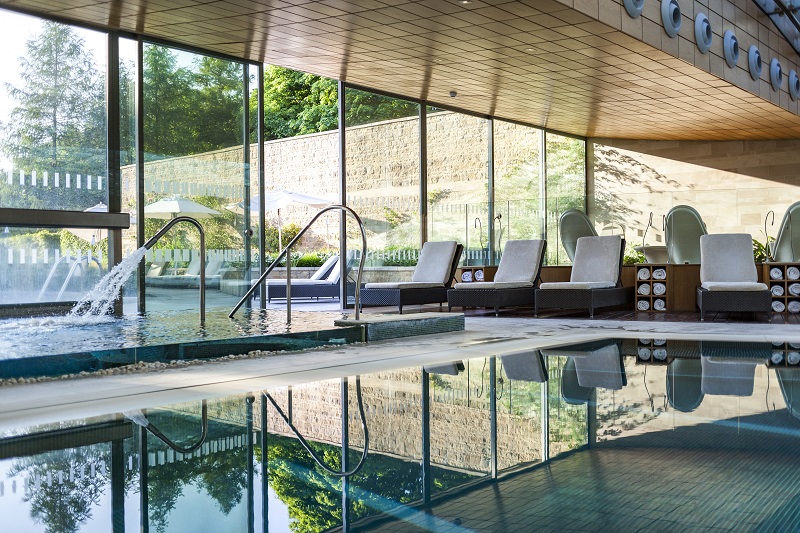
The feature that really sealed the deal for us however, was The Hideaway. This little cottage, located on the grounds a short walk away from the main hotel, has everything children of all ages could wish for – a games room with table tennis, a techno space with the latest computer games, a role-play area for youngsters, featuring a mini playhouse and shop, as well as a room for more creative – or messier – types looking for water play, arts and crafts and music.
Lucknam Park was recently named Best For Families at this year’s Conde Nast Johansens Awards For Excellence and while children are certainly well-catered for, so too are the adults.
The hotel’s sumptuous spa features an indoor and outdoor hydrotherapy pool, as well as eight state-of-the-art treatment rooms and thermal cabins.
Suitably relaxed by our stay, we headed off to Bath, located just under 10 miles away from Lucknam Park.
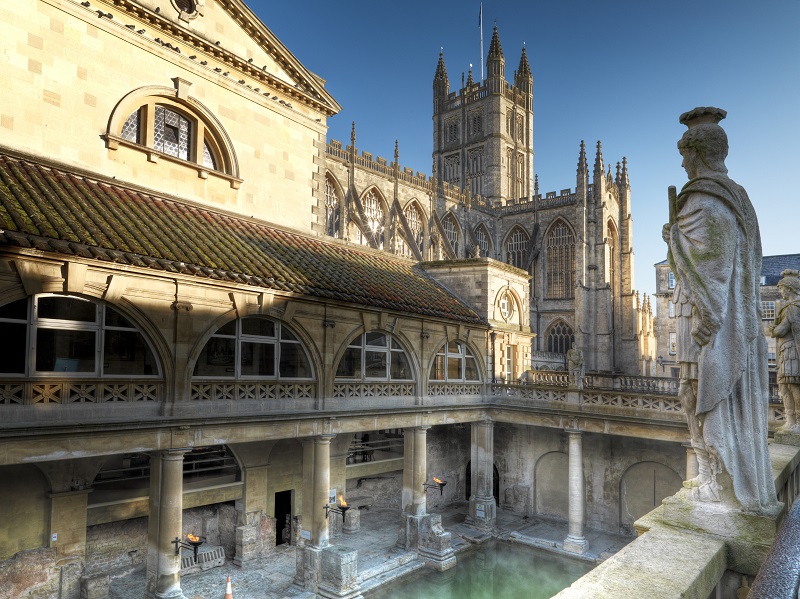
This historic city is best known for the ancient Roman Baths, where visitors can still see the remains of the spa built as a shrine to Minerva, as well as Britain’s only natural thermal spring.
You can taste the famous spa water, which contains 43 minerals, from a fountain located within the ruins, or from the traditional fountain in the Georgian Pump Room, located above the Baths.
Be warned however, the water is warm and has a very distinctive taste that may not be to everyone’s liking!
Interestingly, affluent Sephardic Jews came to Bath as early as 1730 to try out the curative powers of the water and a few decades later, the city’s first community settled here.
By 1874 however, numbers had dwindled and services ceased at the synagogue. Later attempts to rebuild the community never took off, but visitors today can still see the Old Jewish Burial Ground in Coombe Hill, which dates back to 1812.
Rounding off our visit, we headed off to the city’s famous tearoom, Sally Lunn’s, located inside one of Bath’s oldest houses and dating back to 1482.
Sally Lunn was a young Hugenot refugee where she arrived in Bath in 1680 and began selling her famous Bath bunn – a regional specialty not too dissimilar to brioche – or even challah, for that matter. And I can vouch it’s just as delicious with a touch of cream cheese and smoked salmon.
Francine and her family stayed at Lucknam Park Hotel & Spa, Wiltshire (01225 742 777, lucknampark.co.uk) which offers Classic rooms from £295 per night, based on 2 adults sharing on a room only basis, including use of the spa facilities and VAT. Special offers include four nights for the price of three, lucknampark.co.uk/offer/four_for_three and the Garden Tour Getaway Package, lucknampark.co.uk/offer/garden-getaway. For more details about Stonehenge, visit english-heritage.org.uk/visit/places/Stonehenge and The Roman Baths, visit romanbaths.co.uk
Listen to the Jewish Views Podcast:

Thank you for helping to make Jewish News the leading source of news and opinion for the UK Jewish community. Today we're asking for your invaluable help to continue putting our community first in everything we do.
For as little as £5 a month you can help sustain the vital work we do in celebrating and standing up for Jewish life in Britain.
Jewish News holds our community together and keeps us connected. Like a synagogue, it’s where people turn to feel part of something bigger. It also proudly shows the rest of Britain the vibrancy and rich culture of modern Jewish life.
You can make a quick and easy one-off or monthly contribution of £5, £10, £20 or any other sum you’re comfortable with.
100% of your donation will help us continue celebrating our community, in all its dynamic diversity...
Engaging
Being a community platform means so much more than producing a newspaper and website. One of our proudest roles is media partnering with our invaluable charities to amplify the outstanding work they do to help us all.
Celebrating
There’s no shortage of oys in the world but Jewish News takes every opportunity to celebrate the joys too, through projects like Night of Heroes, 40 Under 40 and other compelling countdowns that make the community kvell with pride.
Pioneering
In the first collaboration between media outlets from different faiths, Jewish News worked with British Muslim TV and Church Times to produce a list of young activists leading the way on interfaith understanding.
Campaigning
Royal Mail issued a stamp honouring Holocaust hero Sir Nicholas Winton after a Jewish News campaign attracted more than 100,000 backers. Jewish Newsalso produces special editions of the paper highlighting pressing issues including mental health and Holocaust remembrance.
Easy access
In an age when news is readily accessible, Jewish News provides high-quality content free online and offline, removing any financial barriers to connecting people.
Voice of our community to wider society
The Jewish News team regularly appears on TV, radio and on the pages of the national press to comment on stories about the Jewish community. Easy access to the paper on the streets of London also means Jewish News provides an invaluable window into the community for the country at large.
We hope you agree all this is worth preserving.
-
By Laurent Vaughan - Senior Associate (Bishop & Sewell Solicitors)
-
By Laurent Vaughan - Senior Associate (Bishop & Sewell Solicitors)
-
By Laurent Vaughan - Senior Associate (Bishop & Sewell Solicitors)
-
By Laurent Vaughan - Senior Associate (Bishop & Sewell Solicitors)


